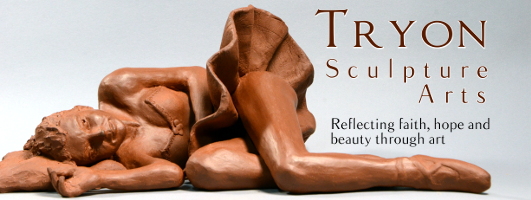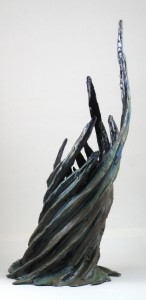One of the interesting things I’ve noticed when looking at art with some of my non-artist friends, especially when looking at more abstract art, is the tendency of those friends to ask, “But, what does it mean?”
Now, in their defense, these friends really are trying to understand what they are looking at. They squint and turn their head sideways, trying to find something in the piece that they can recognize or connect to. Sometimes I try to tell them that a piece doesn’t necessarily have to “mean” something, or that the “meaning” may be something that isn’t necessarily describable in words per-say, but I’m not helped by the fact that some “art critic” somewhere has gone to endless lengths to describe in great intellectual detail what this or that artist is “saying” through the blobs of color splattered across the canvas.
However, the more I think about the “meaning” of art, the more I believe that we are asking entirely the wrong question.
To assign a meaning to a piece of art is to assume that the work has a narrative, and more important, that the narrative is fixed in time, that the artist understood that narrative, and that he or she intended to communicate that narrative to us, the viewer. However, real art isn’t fixed in time. It is certainly a product of the historical context from which it was forged, but if it has any real worth, the work has to be able to speak to all time, and perhaps to all people. In addition, each person’s response to the work will be colored by that individual’s experience, history, story, perspective, emotional stability, what they ate for breakfast that morning, and a thousand other factors.
On the flip side, some people would claim that there is no true “meaning” to a work of art, and that it is completely subjective, based on the viewer’s interpretation. I think this fails on the basis that it denies any participation from the artist, the person from who’s imagination the work sprang. Intentionally or unintentionally, the artist has put some sort of thought, emotion, symbolism, or intent into the piece. They may not even be conscious of the messages (there are always more than one) in the piece, but they are there nevertheless.
I believe that the better way to think about the content, or message of a piece is to think in terms of intent and response.
An artist always has an intent when he or she begins to work with a piece. That intent may shift over time. It may have different levels of conscious or unconscious input. It may be dark and deeply meaningful, or light and playful. The intent will depend on the artist’s world view, their experience, issues that they are familiar with, things they see around them and their response to the natural and man-made world. They will fold the things that make them happy, the things that make them sad, things that make them angry, things that make them afraid, things that give them hope, all the things that shape their lives, and which artists have learned to recognize and reflect on… and make them a part of their creation.
But then, no work of art exists entirely on its own. It’s not really art until someone (presumably someone other than just the artist) looks at or experiences the work. When someone experiences the work, they will have a response. The response will be on different levels — emotional, intellectual, spiritual, physical, and as I described above, will depend on a host of different personal attributes that they bring to the piece. Their response may change over time as they experience a piece more than once. The response may be conscious or unconscious. The important part is that the response is personal, and that it is true, in the sense that it is true for that individual
The interesting part is that, these two may, or may not overlap. I suppose that most artists measure the success of their work by the degree to which these two do overlap, but perhaps the real measure of a work is the extent to which it speaks beyond the original vision of its creator, and touches many different people in many different ways.
The critical idea is that neither of these sides are the only truth. We cannot deny the part of the artist and what he or she intends for the work. The artist may choose to give the work a title, or other descriptive text, to signal some part of that intent, or at least what the were thinking about when they created the piece, or they may leave the work untitled, depending on the piece itself to communicate their intent. On the side of the observer, their response to the work goes far beyond “understanding” what the artist was trying to say. Just as some people laugh at the sight of a circus clown, while others cover their eyes and run away, responses can be wildly different. However, whatever the response is, the piece has done its job of speaking to them, to their imagination, their emotion, their physical body and to their intellect, and in that sense, is true.
Of course, that still may not help my poor friend standing there in front of the painting, trying to figure out what it means…. 😛

